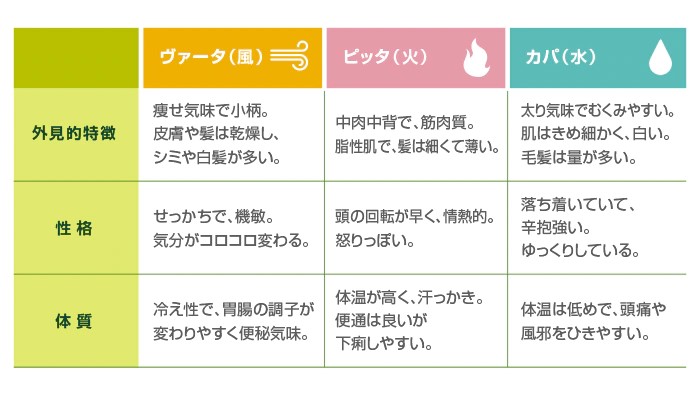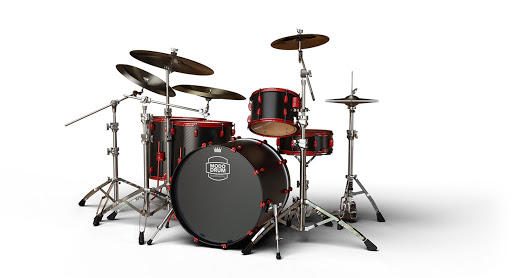Why Teacher Trainings are Killing Yoga
*Scroll down for English
私は、カナダの多くの少年たちと同様にアイスホッケーと共に育ちました。始めたのは4歳の時。最初の数年間は、アイスホッケーは趣味であり、友達を作ったり、ちょっとした楽しみのためのものでした。 しかし、11か12歳になった頃には、それ以上の存在になっていました。
アイスホッケーに夢中になったのです。
9月から3月までのオンシーズンでは、毎日のように屋外の近所のリンクで仲の良いチームメイトと一緒に活動していました。 毎日放課後に2、3時間、週末や休日には日没後まで一日中過ごし、心配した両親が私たちを探しに来るほどでした(照明設備があってよかった!)。 さらに、毎週行われる2〜3回のチームの公式練習と1回の試合、週末に行われる町外でのトーナメント、さらに年に1度のマイナーホッケーウィークイベントで試合を行っていました。
オフシーズンには、体力を保つためにボールホッケーやラクロスやサッカーをする人もいれば、技術を磨くためにサマーホッケーキャンプに参加する人も多くいました。BC州のオカナガンで行われた夏のパワースケートキャンプでは、元NHL選手たちに足がやけどするほどスケートをさせられたことを今でも鮮明に思い出されます。
ホッケーは私たちにとって情熱であり、生活の一部でした。
プレイやトレーニングをしていないときは、NHLのプロの試合を見て、復習し分析していました。NHLのカードを集め、統計データを覚えていました。本を読み、功績を残した人たちのインタビューを見たりしていました。
私はホッケーに生き、息づいていたのです。
卓越した才能があった友人の数人はNHLでプロとして活躍しましたが、ほとんどの仲間は18歳で競技ホッケーから引退しました。 その後、少年ホッケーのコーチをする友人もいるなか、私は大阪で高校チームのコーチをパートタイムで手伝いました。
ホッケーをコーチしたり教えたりするのに「コーチ・トレーニング」を受けることはありませんでした。 コーチ・トレーニングは、数は少ないですが(今はもっと多いようです)公の場での話し方や選手のモチベーションの上げ方などコーチとしてのスキルを磨くためのもので、ホッケーのプレイや“生きる”ことを教えるものでもありません。
私たちはアイスホッケーを愛していました。アイスホッケーを生きていました。 私たちがアイスホッケーをプレイしたのは、いつか教師やコーチになりたいと思ったからではありません。 私たちがアイスホッケーをしていたのは、それが生き方であり、情熱だったからなのです。 やがて、その情熱を他の人たちにシェアするようになった人たちもいます。
そして、ヨガを教えること、そしてヨガのティーチャートレーニング(TT)について考えてみましょう。ヨガのティーチャートレーニングは誰かに合っているのか、ヨガのティーチャートレーニングで何を探求するべきなのかという質問をたくさん受けます。 私の答えは決まって「なぜ」から始まります。
6週間、200時間のピアノ教師養成講座を受けて、ピアノを教えるようになった人のことは聞いたことがありません。 バレエの先生や茶道の先生でもそういった人はいないでしょう。 私のドラムの先生は長年スネアドラムを叩いたり、ベースドラムのキックの練習してから教えるようになりました。確認したところ、彼はドラムのティーチャートレーニングは受けていないそうです。
きっと例外もあると思います。 長い時間をかけた取り組みや継続的な練習、深い情熱がなくても教えられることはあるかもしれません。 しかし、「ヨガ」がそれに当てはまるカテゴリーでしょうか?
私はヨガのティーチャートレーニングを非難しているわけでは決してありません。特定のヨガで行う「アーサナ」のポーズのように、これらのトレーニングは素晴らしいツールとなる可能性を秘めています。 通常のヨガクラスではできないようなコンセプトをより深く追求することができます。 哲学、マントラ、その他、過去の偉大なヨギが大切にしていたもので現代のヨガではほとんど教えられていない多数のテクニックなど、知らなかった思想やヨガの異なる側面に触れることができます。 そして参加者は、さらに練習して、ヨガの教えに沿った人生を送りたいと思うようになります。
また、子供の頃にヨガを始めていない人は、教えるべきではないと言っているわけではありません。 私たちは皆、自分が知っていること、経験したこと、吸収したことを共有することができます。 そして、人生は私たちに、よりよい教師になるための多くの経験を与えてくれます。問題は数時間や数週間という短い期間で、必要な知識や経験、吸収したものを補うことができると信じてしまうことが間違いではないかということです。
ヨガのティーチャートレーニングの役割はあるかもしれません。いえ、役割があるはずです。しかし、トレーニングを提供するスクールや指導者、そして参加者には、このティーチャートレーニングというツールが適切に提供され、使用されるようにする義務があります。 ティーチャートレーニングは、練習、人生経験、自己発見、探究、情熱、好奇心、研究、試行錯誤、分析、実験、見直し、反省、内省に取って代わるものではありません。
私たちは練習する必要があります。生きることが必要です。そして私たちが実践する(そして生きる)すべてのことの延長線上に「シェアする」ことがあるのです。
<お知らせ>
マニーシュによるトレーニングプログラム「 Student Teacher Training Course (略称:STTC)」Level 2が2021年6月にオンラインで開講します。観る目を養い、内なる指導者を育てるプログラム。他の人や自分自身を正しく見ることが真実を理解することにつながります。その目を育てていきましょう。
Why Teacher Trainings are Killing Yoga
Like so many other young boys in Canada, I grew up playing ice hockey. I started at the age of four. For the first several years, ice hockey was a hobby, a way to make friends and to have a bit of fun; however by the time I hit 11 or 12 years old, it became much more than that.
I became consumed by the sport.
In the on-season (Sept to March), on any given day, you could find me at the outdoor community rink with my closest teammates. A couple of hours everyday after school and, on weekends and holidays, from day break until well after the sun went down and our worried parents came searching for us (thank God for flood lights!). This was besides the two or three official team practices and one game we had most weeks, out-of-town weekend tournaments and the annual minor hockey week event.
In the off-season, most of us kept fit by playing ball hockey, lacrosse or soccer and many of us would take summer hockey camps to sharpen up our skills. I have vivid recollections of our summer power skating camps in the Okanagan, B.C. where ex-NHLers would make us skate until we learned to love the burn in our legs.
Hockey was a passion and a way of life for us.
When we were not playing or training, we were watching, reviewing and analyzing pro NHL games. We collected NHL cards and memorized statistics. We read books and watched interviews with some of the greats.
We lived and breathed hockey.
While a few very talented friends went on to play professionally, like most, I retired from competitive hockey at 18. At later stages in life, some friends went on to coach minor hockey. I came to Osaka and helped coach a local high school team part-time.
For us coaches, we didn’t have ‘ice hockey coach trainings’. And the very few that existed (there seem to be many more today), were there to refine your skills as a coach – how to speak publicly, motivate players, etc. – not to teach you how to play or ‘live’ hockey.
We loved ice hockey. We lived ice hockey. We played not because we wanted to teach or coach some day. We played because it was a way of life and a passion. A passion some of us eventually went on to share with others.
That brings me to teaching yoga and to yoga teacher trainings (TT). I get a lot of questions about whether a yoga TT is right for someone or what to look for in a yoga TT. My response invariably begins with: “Why?”
I haven’t heard of anyone who took a 6-week, 200-hour piano TT and then went on to teach piano. I don’t know of a ballet teacher or a tea ceremony who has done this either. I know for a fact that my drum teacher has been snapping that snare and kicking that bass drum for decades longer than he has been teaching. And I checked – he has never taken a ‘Drum TT’.
I am sure there are exceptions out there. There may be things that can be taught without a long-time commitment, continued practice or deep passion for it. But is that the category we want our ‘yoga’ to fit into?
I am in no way bashing yoga TTs. Like the asana (poses) we learn and practice, these trainings have the potential to be great tools. Students can go deeper into concepts that they otherwise would not be able to in a typical yoga class. They can be exposed to new ideas and different facets of yoga such as philosophy, mantra or the other multitude of techniques the ancient yogis emphasized but that are rarely taught in modern yoga. And participants can be inspired to practice more and live a life imbued with the spirit of yoga.
I am also in no way suggesting that if you didn’t start yoga as a child that you shouldn’t be teaching. We can all share what we know and have experienced and assimilated. And life has given us so many experiences that make us better teachers. The question is whether we are making the mistake of believing that yoga TTs can, in a short few hours or weeks, make up for that necessary knowledge, experience and assimilation.
So, there may be a place for yoga TTs. In fact, I am sure there is. But it is incumbent upon the schools and teachers offering these trainings and upon the participants taking them to make sure this tool is used properly.
TTs cannot replace practice, life experience, self-discovery, exploration, passion, curiosity, inquiry, trial and error, analysis, experimentation, review, reflection and introspection.
We need to do these things. We need to practice. We need to live. And perhaps, as an extension of all that we practice (and live), we share.







